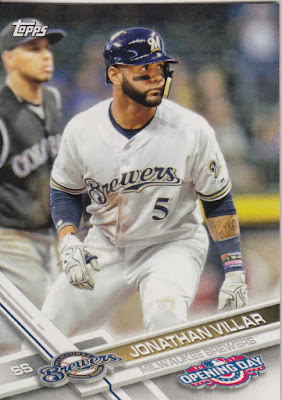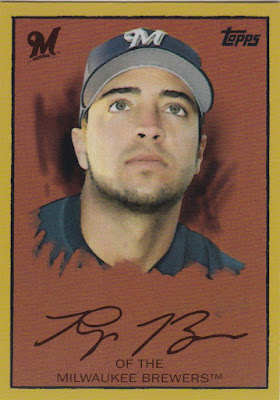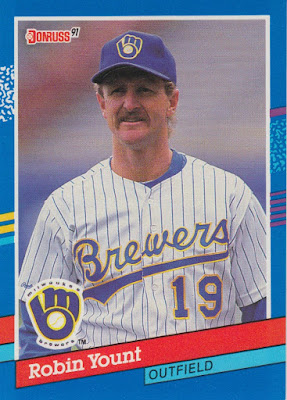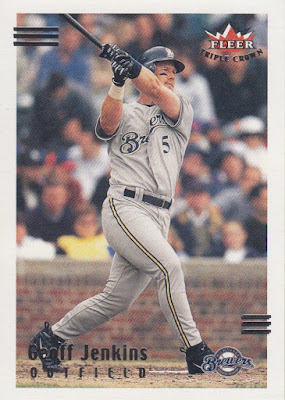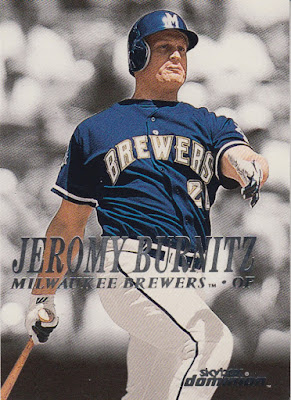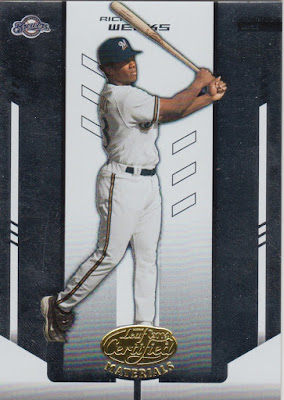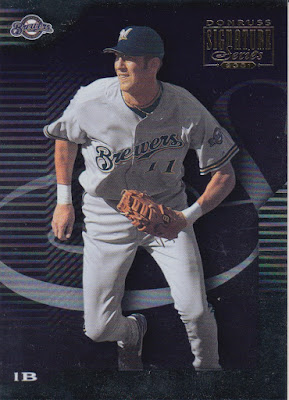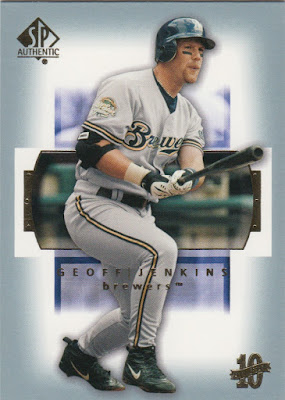The author focused on a city-centric approach rather than a franchise approach, which means, for example, that the Washington Senators' various iterations are made a part of the Washington Nationals' franchise history. This means, too, that former franchises including the Philadelphia Athletics, the Montreal Expos, the Brooklyn Dodgers, the Boston Braves, the New York Giants, and the St. Louis Browns are resurrected. From there, the author creates 6 divisions of 6 teams each named after the current divisions.
The Milwaukee "franchise" is placed in the AL Central alongside the Chicago White Sox, Cleveland Indians, Detroit Tigers, St. Louis Browns, and Tampa Bay Rays. The thought behind putting the Milwaukee Braves with the Brewers is that if the Braves had never left, Atlanta would have gotten a team anyway but the Brewers would never have existed. The final rule is that players can only be placed on one team -- so Warren Spahn ends up on the Boston Braves, thereby depriving the Milwaukee team of its clear, by far best pitcher.
The Milwaukee team is heavy on hitting. Very heavy. At the same time, the pitching is as thin as tissue paper. Milwaukee's best pitcher in its history is the one pitcher who "dominated over an extended period of time": Teddy Higuera. Seriously, that's it.
In terms of the starting lineups, it's again a very interesting set up. I'm going to use it to introduce the cards I bought recently from Brent Williams off eBay to try and guess what chances the guys in this year's sets have of making it to the "all-time team."
Let's start with the easy one:
That's a whole lot of Ryan Braun, and for good reason: Braun is the starting left-fielder on the Milwaukee team. The projected starting lineup puts him hitting third against righties and second against lefties. It's actually a pretty incredible lineup: against righties, the lineup is constructed with Eddie Mathews leading off. As the article notes, Mathews led the NL in walks four times, including three straight years from 1961 to 1963. He finished in the top-10 in OBP in the NL 10 times.
Yeah, Eddie Mathews was really, really damn good.
Braun was a shoo-in for a spot on the team, even if he is the only non-Hall of Fame starting outfielder alongside CF Robin Yount and RF Hank Aaron. He's backed up by Carlos Gomez and Gorman Thomas and, if necessary, Hank Aaron. Other than Braun, the other four outfielders on the team all played centerfield for significant portions of their career.
Now, onto the totally speculative:
With Orlando Arcia, we have very little to go on currently. Hitting-wise, he is improving. He is getting used to being in the big league. He chalks up a recent 9-game hitting streak to better pitch recognition:
.@Brewers shortstop Orlando Arcia tells @SophiaMinnaert that his pitch recognition is improving pic.twitter.com/4r82BTauWN— FOX Sports Wisconsin (@fswisconsin) May 30, 2017
And props to Sophia Minnaert for being bilingual. As a quick aside, I'm a big fan of sideline reporters who are bilingual and can translate on the fly. Atlanta United has Brittany Arnold who can do the same thing, and I feel like it is important so that we get to hear from guys like Arcia (or Miguel Almiron with ATLUTD) directly just the same as the English speakers who get interviewed on ESPN.
Back to the Milwaukee team. The Brewers/Braves roster only includes Yount and Braves stalwart Johnny Logan at shortstop (though Bill Hall could play the spot in a pinch). Logan was one of the all-time best defensive shortstops ever, and he was not a complete zero with the bat (OPS+ career of 94). Because Yount can play short, though, the author felt justified in carrying Gorman Thomas to destroy lefties.
If Arcia can develop further -- continuing to improve his pitch recognition, continuing to keep his strikeouts down, learning how to read pitchers on the basepaths, and the like and, further, assuming that he spends a good amount of his career in Milwaukee -- then there is a very good chance that he could end up displacing Logan. He is still very young -- turning 23 in August -- so that development time will be interesting to watch.
Next up: Jonathan Villar. Based off last season, if Villar could have been projected out from there, he would have been difficult to leave off the roster. This year has seen him come back down some -- he is hitting terribly this year -- so it's an open question as to what he can be or is.
He would be hard-pressed to be a starter on the all-time Milwaukee team since the team lines up another Hall of Famer there: Paul Molitor. Molitor could have been put at a number of positions, but second base was the best fit. Behind Molitor, the team would have long-time underrated Brewer Don Money, who could fill in both at second and at third. Money was such a good fielder at third base that he set a major league record with 86 straight games without an error in 1974. Despite that, he ended up being the AL All-Star starter at second in 1978 -- playing there while Molitor played short and Yount played golf.
Long-time Brewer Jim Gantner made the 40-man roster as a 2B/3B fill-in as well, and Bill Hall could slot in here at second as well. So, odd as it may sound, Villar joins a long line of Brewers with positional flexibility in the infield. Molitor, Money, Gantner, and Hall all played all over the infield, with only Gantner not being at least a part-time starter at shortstop in that time (he started 5 games at short in his career).
All the caveats about time in Milwaukee apply to Villar, and if he can produce near what he did last year, he has a good shot to get onto the roster at a minimum. Don't underrate Don Money here, though: during his 11 years in Milwaukee, he hit .270/.338/.421 for an OPS+ of 114, including four all-star games. He platooned from 1979 through 1983, but he always had good power.
Welcome to the black hole that is pitching in Milwaukee. I supposed Davies and Nelson have as good a chance as anyone to make it into the mix for a slot pitching for the Milwaukee "Brewers" all-timers. To give you an idea of what I mean by black hole, here's the pitching staff:
SP: Higuera, Ben Sheets, Mike Caldwell, Chris Bosio, and Bill Wegman
Closer: Ken Sanders
8th inning: Dan Plesac
7th Inning: Tom Murphy
Setup: Chuck Crim and Dave Jolly
Mop-up: Braves P Don McMahon
Spot Starter: Lew Burdette
Others on the 40-man: Ricky Bones, Bob Buhl, Doug Davis, Cal Eldred, Mike Fetters, Ray Searage, and Bob Wickman
I'm a little surprised that Yovani Gallardo did not make the team over Doug Davis or Ricky Bones or even Chris Bosio. I have tweeted at him and left a comment to see his reasoning (or to see if Yovani just got missed in the shuffle).
So, either of these guys could get there, I suppose. But I kind of doubt it.
No chance. Not unless Scooter ends up back in Milwaukee, jacks up on steroids, and suddenly turns into a lefty-hitting Bret Boone or Jeff Kent.
Since these guys are no-hopers, let's look at the catching slot and at first base. I've mentioned in the past about how Del Crandall was really a star in his day. He ends up getting the nod as a part of a platoon with Jonathan Lucroy. Not bad. But, if we look at how the 40-man stacks up, we find Joe Torre listed as a C/1B. That's weird because I think of Torre as a Cardinal thanks to his MVP season there. As the article points out, though, Torre's career essentially gets split four ways thanks to the way that the pyramid system is structured -- his Braves time is half Milwaukee, half Atlanta -- and his best season was 1971 with St. Louis.
At first base, we plug in Cecil Cooper. Arguably, that's a difficult slot too. Prince Fielder becomes a platoon DH who will absolutely annihilate right-handed pitching as a 1-2 punch with Eddie Mathews (career for Fielder against RHP: .294/.403/.539: a .942 OPS...which is basically Willie Mays), though Fielder sits against lefties to allow Gorman Thomas to mash. On the 40-man, George Scott beats out Joe Adcock for the spot thanks to the fact that Scott won five Gold Gloves in Milwaukee while also crushing the ball (.283/.342/.456).
I highly recommend reading the articles on Hardball Times about your favorite team's all-time team. Sure, the clubs like the Red Sox and the Yankees -- with their long histories -- have a distinct advantage over newcomers like the Marlins or the Brewers or the Padres. But it sure is fun to revisit those old names.
And, while you're at it, look up Brent Williams on eBay and Twitter -- he's a collector who sells rather than being just a seller.












